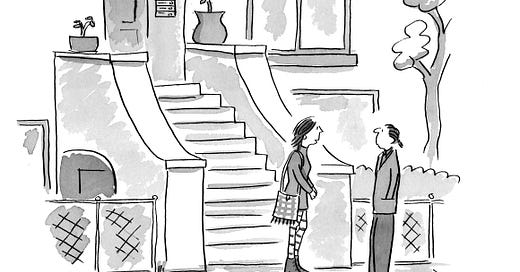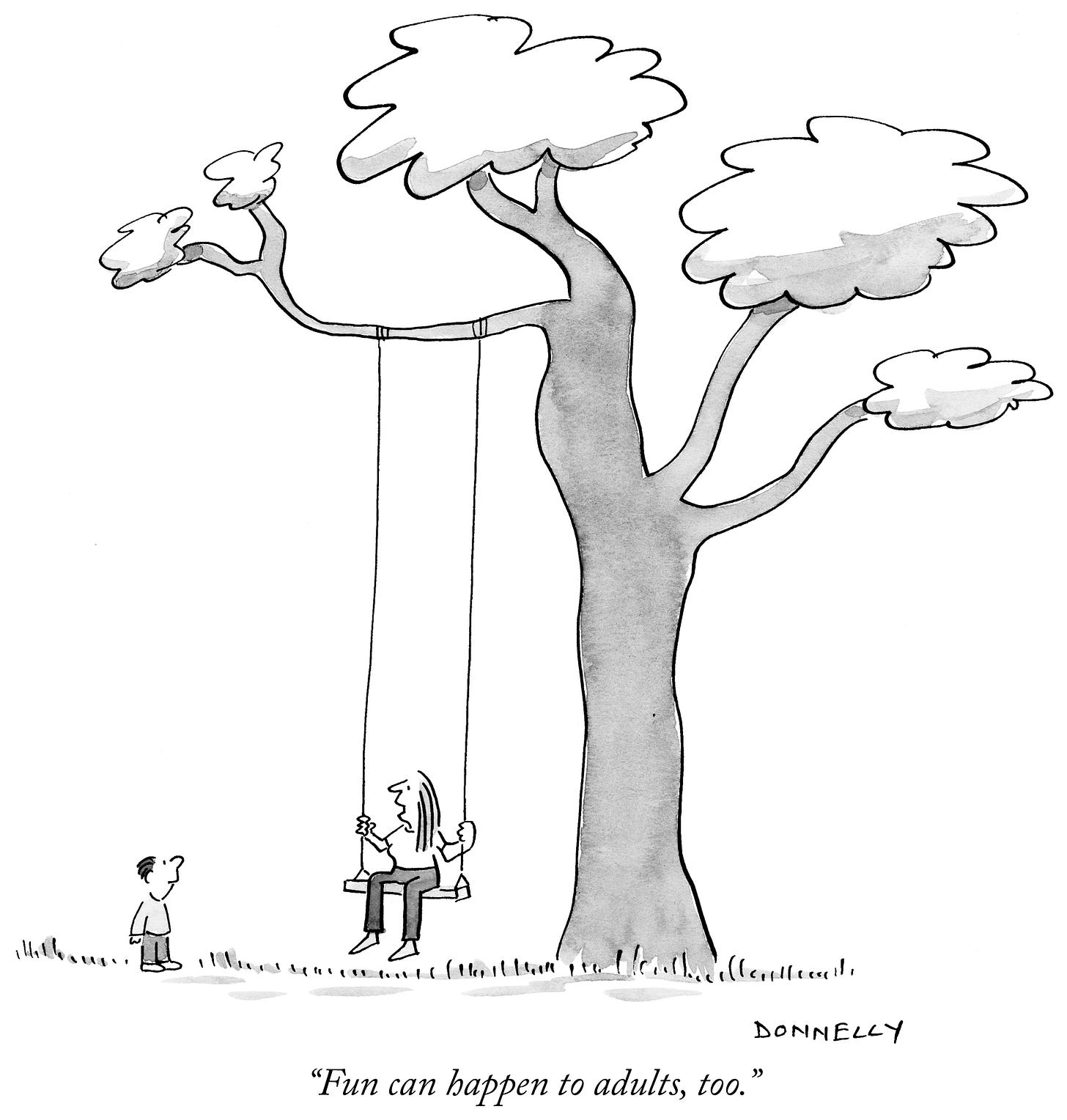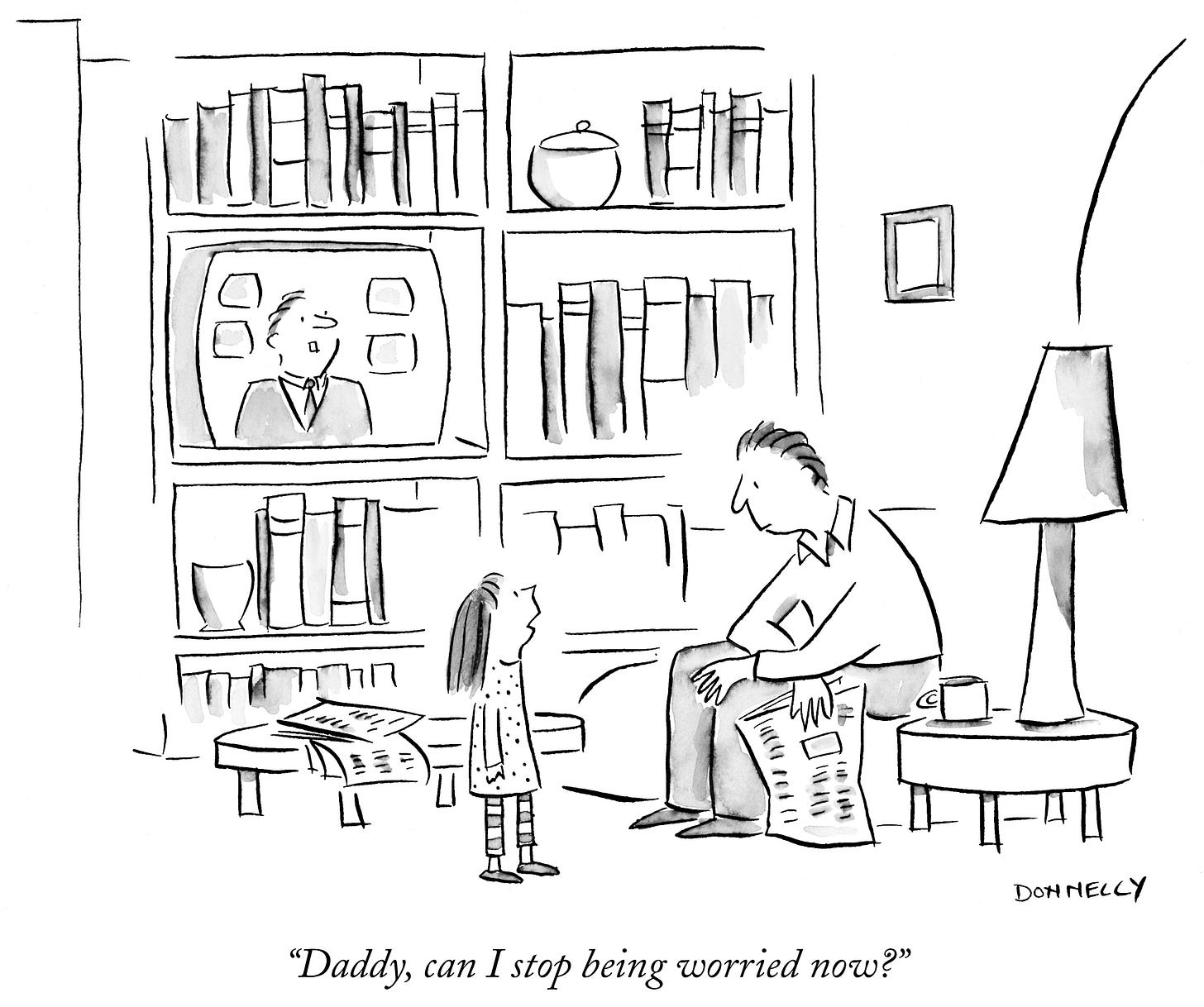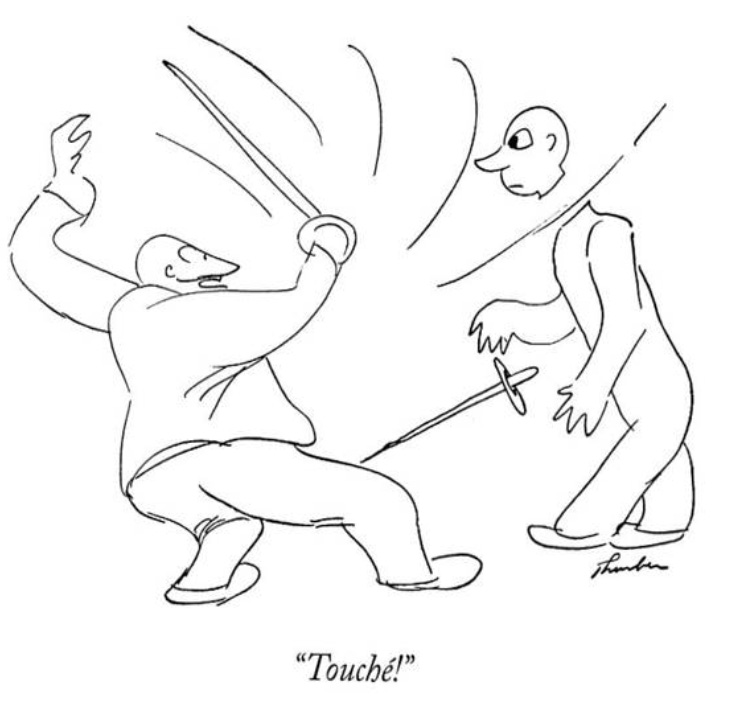I’m currently writing a talk about story as in New Yorker cartoons, which I will deliver next week at Dreamworks. It’s an honor to speak to their creative community— I just hope I can impart something new! Here are parts of what I will say.
Story is everywhere. In single panel cartoons, they have to be kept in one image. It’s tricky and challenging and I love it. I like to say that a single panel cartoon is like a mini stage. The artist is a set designer, choreographer, script writer, costume designer, casting director. Each element in the drawing needs to be necessary for the idea, no more, no less; there are exceptions of course. Some creators are known for a style that is overly detailed and complicated, and that is part of the voice of the artist and contributes to the story. The image is a moment in time, and you have to feel that there is time before the moment you see, and a continuation after that moment. And the characters are well “described” in the execution.
There are so many elements at work in a good single panel cartoon. I don’t always follow what I am telling you, but I try. Here are some other thoughts I will be speaking about, using my work in The New Yorker as example.
Find the connection with the viewer. Meaning, something that we all can relate to. As in this drawing, the feeling like our lives are out of control.
Try to make it timeless. You want the drawing to last, to appeal to someone 30 years or 100 years later. In this one, everyone always wants to have fun and who doesn’t like swings?
Find the universal in the personal. There are things in each of our lives that we share and that sometimes will never go away. Worry is one of them. This was drawn right after 9/11, but applies in many instances.
Make the drawing style work with the idea. For this, I couldn’t find a good one of my own that fit the bill, so I thought I would show you one by someone else. There’s a fun story from “Years With Ross,” by James Thurber that goes with it. The drawing below was originally done by artist Carl Rose. When the Rose drawing was discussed in the art meeting prior to publication, senior editor Harold Ross said that the idea should be given to Thurber because it was, “too bloody” he said. In Thurber’s hands, it is less real, not real people. Ross said, “Thurber’s people have no blood. You can put their heads back on and their good as new.”
So in this case, style really is important to the drawing.
Bottom line: story in the best New Yorker cartoons tell us a story about the characters that are in the drawing, and about ourselves. This is why we love them so much—they are fun, entertaining and are about us.









As a long time doodler, I’m trying to learn from all the cartoons and drawings that I see at my senior years. I’m a constant doodler and it brings me happiness . Simplicity of lines coupled with meaning and messaging is truly a very difficult thing to achieve. I admire all forms of story telling and it is always a delightful thing to watch a good idea synthesized in one perfect drawing and a short caption. The examples are all great.
I feel like the little girl in #3. So much bad news nowadays. Your drawings help a lot.